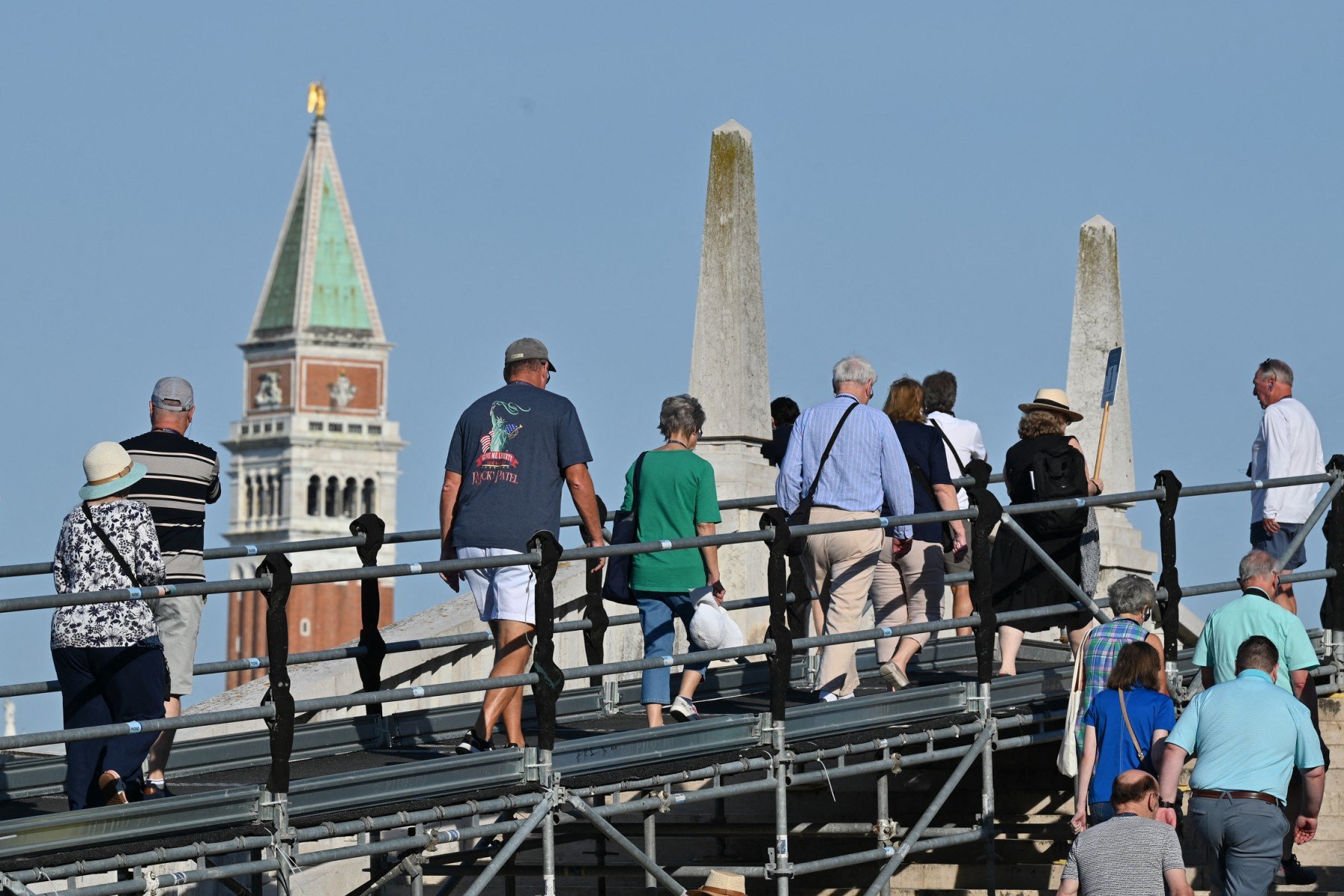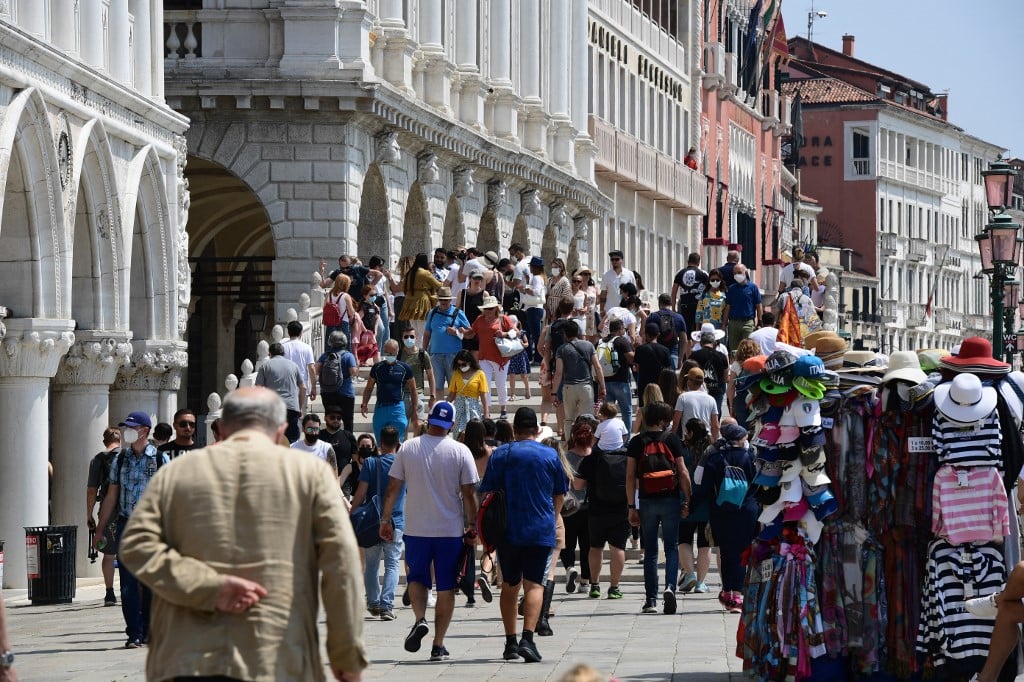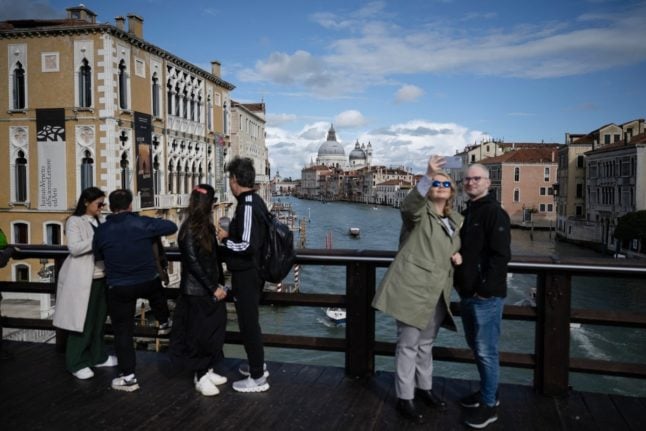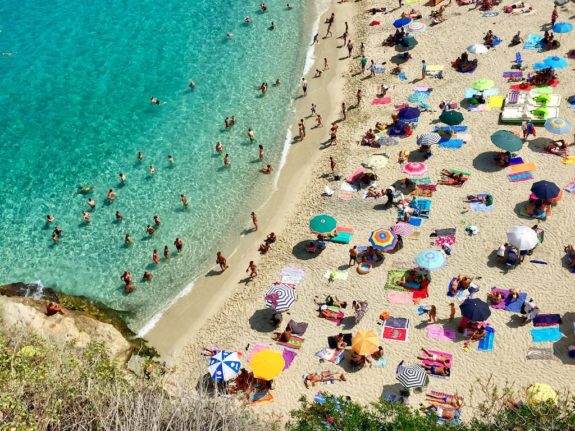As of Thursday – a public holiday in Italy – day visitors will for the first time have to buy a €5 ticket, monitored by inspectors carrying out spot checks at key points in the UNESCO world heritage site.
Considered one of the most beautiful cities on the planet, Venice is one of the world’s top tourist destinations — but is drowning under the weight of the crowds.
READ ALSO: EXPLAINED: How will Venice’s ‘tourist tax’ work?
Under the trial system, so-called Access Fee tickets will be required only on 29 busy days throughout 2024, mostly weekends from May to July, with the goal of persuading day-trippers to visit during quieter times.
“The aim is to find a new balance between tourism and the city of its residents,” Simone Venturini, the local councillor responsible for tourism, told AFP.
“We must work to reduce the impact of daily tourism on certain days… (which) generates stress for the city,”, he said.
The scheme is being closely watched as destinations around the world grapple with huge numbers of tourists, who boost the local economy but risk overwhelming local communities and damaging fragile ecosystems and historical sites.
READ ALSO: What’s the difference between Italy’s city taxes and new ‘tourist tax’?
Luigi Brugnaro, the mayor of Venice, has described the city’s scheme as “an experiment, and the first time it’s been done anywhere in the world”.
“Our aim is to make Venice more liveable,” he told reporters earlier this month.

UNESCO warning
Venice, spread over more than 100 small islands and islets in northeastern Italy, is considered one of the world’s most beautiful cities.
The UN cultural body UNESCO listed the city and its lagoon as a world heritage site in 1987, citing it as an “extraordinary architectural masterpiece”.
But UNESCO threatened last year to put Venice on its list of heritage in danger, citing mass tourism and also rising water levels attributed to climate change.
Venice only escaped the ignominy after local authorities agreed the new ticketing system.
The idea had long been debated, but repeatedly postponed over concerns it would seriously dent tourist revenue and compromise freedom of movement.
READ ALSO: ‘It’s not Disneyland’: What Venice residents really think of new ‘tourist tax’
During a debate on the plan last September, opposition councillors cast the measure as a hastily arranged concession to UNESCO that would not have any impact.
“Fifty euros might have done something,” said one, Gianfranco Bettin.
In 2021, Venice had already imposed a ban on massive cruise ships from which thousands of day-trippers emerge daily, rerouting them to a more distant industrial port.
It has also introduced a tax for overnight visitors.

No queues
Venice’s mayor has promised the new system will be imposed with a light touch with “very soft controls” and “without queues”, rejecting speculation the city would be installing barriers or turnstiles in the streets.
Controllers will be stationed in and around the city’s main entrances, notably the Santa Lucia train station, performing spot checks on visitors.
Tourists without their ticket will be asked to purchase one on arrival, with the help of local operators.
OPINION: Why more of Italy’s top destinations must limit tourist numbers
But they could also risk fines ranging from €50 to €300.
The “Venice Access Fee” targets only daily tourists entering the old town between 8:30 am and 4:00 pm, with tourists staying in hotels, minors under 14, and the disabled among those exempt.
For the time being, there is no ceiling on the number of tickets – downloaded in the form of a QR code from an official website, distributed each day.
By AFP’s Gildas LE ROUX





 Please whitelist us to continue reading.
Please whitelist us to continue reading.
Member comments